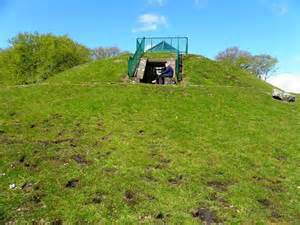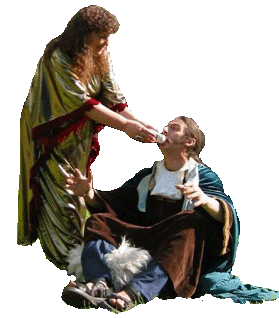
In our explorations of the text of Bricriu’s feast we encountered many passages that demonstrate the story tellers’ art, full of patterning and rich vivid embellishment. The text also contains plenty of evidence for literary collation; versions of the story gathered together for the sake of completeness.
Once stories enter the great library of written material, their creative growth is not over. Motifs that intrigue the audience as well as dramatic or comic episodes, are used, reused and re-interpreted by story tellers as they respond to the mood and demographic of their audience. Little by little, consciously or unconsciously, the sharers of tale, are designing and embroidering the beautiful chaotic patchwork quilt of folk tale.
We have pointed out several examples of this process in past podcast episodes. In ‘The Four Craftsmen’ (series 2 episode 5), we discussed the stories of the Gobbán Sáor that remember the legal trickery of the Dagda and in ‘Corpse Carrying For Beginners‘ we examined a folk tale with similarities to ‘The Adventures of Nera’. These are only two of the many examples we have discussed in the last year.
Cú Chulainn’s amazing and comic feats at Curoi’s fort are remembered in the late folk tale “The Legend of Knockmany Hill” recorded by William Carleton and re-told by many others including James Stephens. This, oral story has, in its turn, become a literary tale but still responds to telling with enthusiasm.
By the time the folktale version reaches a literary form, the two great heroes, Fionn MacCumhaill and Cú Chulainn have become lumbering, and somewhat comic, giants. In this guise, like some Folkloric game of ‘Top Trumps’, they are now set against each other as mortal enemies.
As the story begins, Fionn is up in Antrim building a bridge to Scotland, heaving great pillars of rock into the sea. This bridge, left unfinished at the close of the story, becomes known as the ‘Giant’s Causeway’. When a whisper on the wind, tells him Cú Chulainn is on his way to give him a good thumping, Finn takes the wisest course of action and hurries to Knockmany Hill, near Clougher, in the county of Tyrone. Here his wife, Oonagh, has a cottage on the top of the hill. The hill, to this day, has an interesting, if damaged, chambered cairn on its summit, which may have aided in locating the legend. When the terrified Fionn arrives on her doorstep, Oonagh agrees to save him from the giant if he will promise to obey her every instruction. Much to his consternation, she dresses him in baby clothes and pops him into the cradle. She then borrows a griddle from her sister, Grainne, and sets to baking bread. One loaf hides the iron griddle.
To cut a wonderfully funny story short, the Fionn baby is able to munch on bread that breaks Cú Chulainn’s teeth. Fionn bites off the giant’s brass finger, the one that gives him his strength, after Cú Chulainn demands to feel the baby’s teeth. Once his strength is gone, Fionn is able to deal with the giant.
One section of the story I generally omit, when I tell this story to young audiences, is the part where Oonagh sets tasks for Cú Chulainn while she pretends to be waiting for Fionn to return. These are reminiscent of the the tasks undertaken by Cú Chulainn with Blathnat. This section of the Knockmany legend is quoted below. It is taken from its eighteenth century version, which was first recorded by William Carleton.
“I thought so,” she replied; “I judged as much; and if you take my advice, you poor-looking creature, you’ll pray night and day that you may never see him, for I tell you it will be a black day for you when you do. But, in the meantime, you perceive that the wind’s on the door, and as Fin himself is from home, maybe you’d be civil enough to turn the house, for it’s always what Fin does when he’s here.”
This was a startler even to Cucullin; but he got up, however, and after pulling the middle finger of his right hand until it cracked three times, he went outside, and getting his arms about the house, completely turned it as she had wished. When Fin saw this, he felt a certain description of moisture, which shall be nameless, oozing out through every pore of his skin; but Oonagh, depending upon her woman’s wit, felt not a whit daunted.
“Arrah, then,” said she, “as you are so civil, maybe you’d do another obliging turn for us, as Fin’s not here to do it himself. You see, after this long stretch of dry weather we’ve had, we feel very badly off for want of water. Now, Fin says there’s a fine spring-well somewhere under the rocks behind the hill here below, and it was his intention to pull them asunder; but having heard of you, he left the place in such a fury, that he never thought of it. Now, if you try to find it, troth I’d feel it a kindness.”
She then brought Cucullin down to see the place, which was then all one solid rock; and, after looking at it for some time, he cracked his right middle finger nine times, and, stooping down, tore a cleft about four hundred feet deep, and a quarter of a mile in length, which has since been christened by the name of Lumford’s Glen”
The spelling is his.
 I love telling this story. I have used it in many story-telling and magic shows In one version, the magician played the part of Fionn. It is also a regular part of my ‘Warrior and Wizard’ Irish story family show. Girls from the audience have been delighted to act the part of ‘Oonagh, the most sensible woman in Ireland’.
I love telling this story. I have used it in many story-telling and magic shows In one version, the magician played the part of Fionn. It is also a regular part of my ‘Warrior and Wizard’ Irish story family show. Girls from the audience have been delighted to act the part of ‘Oonagh, the most sensible woman in Ireland’.
I do make a couple of changes. I have never felt comfortable with setting a leading hero from the north against a leading hero from the south. I know Fionn is ubiquitous, but is always strongly associated with the Republic. It seems tactless and unnecessary to name Cú Chulainn. I prefer to introduce the Cú Chulainn giant as ‘the big bully giant’. There are plenty of other well known tales praising Cú Chulainn as a hero.
It remains a great tale, but when I am in story-teller mode, especially to children, I put my folklorist’s hat away in my metaphoric pocket; although, I always know where to find it.t.
link to the full text of William Carleton’s “A legend of Knockmany Hill
Chris
2013

What a fascinating story. I’ve always wondered if the two heroes of the two traditions ever met, although obviously this tale isn’t too ‘canonical’ if that word has any meaning with regard to these texts.
First of all, this seems to be a variation on the simple children’s story I heard at primary school and that is included in several of my kids Irish Mythology storybooks. here is an ultra-simple version of that tale, which also gives us the geographical creation stories of Lough Neagh (another one!) and the Isle of Man, as well as the Giant’s Causeway. So is there a textual origin of the simpler story, or has it come down to us largely from the oral tradition? Come to think of it, the tale you present here does include a mention that Cuchulainn might have been Scottish, so it’s another example of a storyteller drawing different storytelling traditions together.
I’d have to approve of your leaving Cuchulainn out of your oral version of the story. He is indeed much loved by us Ulster folk, and I recall a few pub conversations with my more Unionist-minded friends while I lived in Belfast, where I was surprised to find that they were very proud of him as someone who represented them in some ways. Considering he is held in such esteem by both traditions in Ulster and there is a statue of him in the GPO to commemorate the 1916 Rising, Cuchulainn is a unifying figure. I wonder is there a touch of sectarianism in this late tale, in presenting the ‘possibly Scottish’, Ulster-based Cuchulainn as such an uncouth villain?
I was a little put out to find that yourself and Isolde don’t think much of Cuchulainn, but I can see where you are coming from. I think, especially being from Ulster, we were not encouraged to be too critical of the ‘Hound of Ulster’. I don’t know too much about Fionn and I look forward to finding out more about him. I’d be interested in how the circumstances of where the stories originated might be different for the two heroes. (Although I’m learning that where stories ‘originate’ is a murky business!)
Finally, it’s strange for me to read Cuchulainn depicted as a giant. None of the stories you’ve covered so far mention it, but I’ve always thought that Cuchulainn was usually presented as a ‘shortish gentleman’. (Thus explaining a lot of his more disagreeable traits as ‘short-man syndrome’!) Do the old stories confirm this at all, or what?
Hi Feargal
Yes, the ‘Two Giants’ has become a fairly well-known children’s tale. I often use it as the final story in my ‘Warriors and Wizards’ heritage story show because it is familiar and a bit of light hearted fun. It is also relevant to this series on account of it being a good dindshenchas story.
It difficult to accurately track the true origin and development of the story, particularly the linking of Fionn and Cú Chulainn as William Carleton’s version is effectively a literary version based on local folklore. The oral tradition connecting Fionn with the building of the Antrim causeway is well known.
I wouldn’t say that the story is meant to be seen as specifically sectarian, although Carleton did renounce his Catholicism, remaining Protestant until his death. (I think this was more a matter of upward social mobility than faith.) The tale is more of a thought experiment. If our two most famous heroes had a fight, who would win, Fionn or Cú Chulainn?
I am sorry you have got the impression that we dislike Cú Chulainn. (You should hear isolde on Medb!) We do tend towards irreverence, I know, but you have to admit that our Cú Chulainn can be a bit of a brat at times. It is all that “short but glorious life” stuff. However, he is a very young man with a lot of problems.
I commented in the last podcast episode, on his well developed story arc in Bricriu. He comes across in a most sympathetic manner towards the end. After spending time on this text I like him a lot more.
Cú Chulainn is a very important figure throughout Ireland and his stories are much loved.
As for him being a giant, I would say that he has a giant status. As heroes become bigger in status folklore gives them a bigger stature. Certainly there are several standing stones, off hand I can think of one near here and another group in West Cork, which are attributed to being moved, or thrown, by Fionn, besides his monumental bridge building attempts. He was never portrayed as having gigantic stature in his story cannon either.
Great to hear from you and thanks for your comments.
Chris